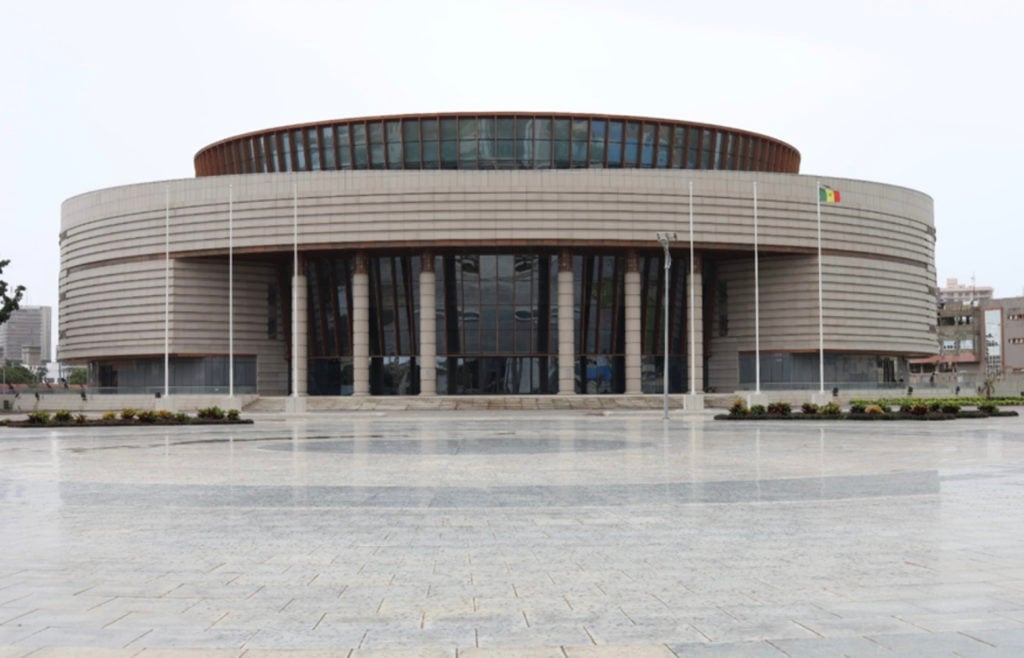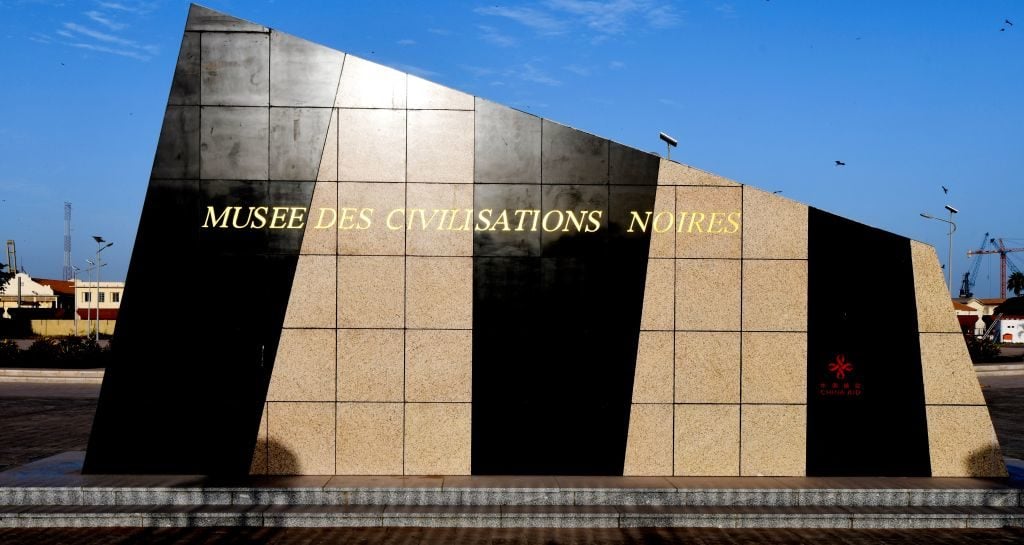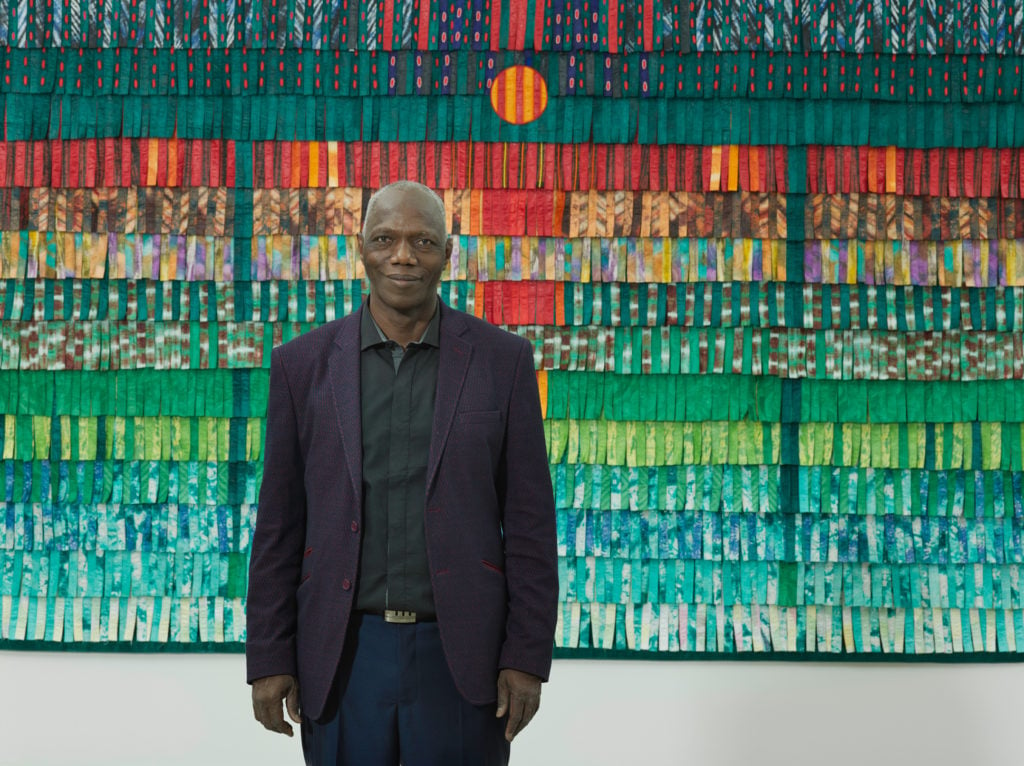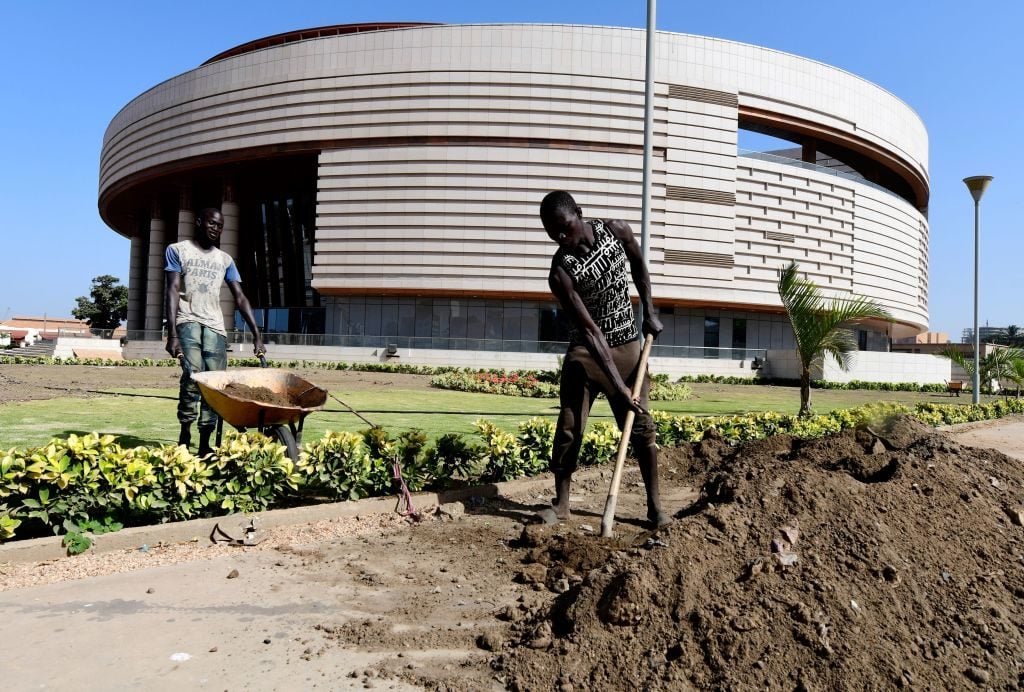Art World
Senegal Unveils a Vast Museum That Raises the Stakes in Africa’s Campaign to Reclaim Its Art
The $30 million Museum of Black Civilizations opens in Dakar thanks to major funding from China.

The $30 million Museum of Black Civilizations opens in Dakar thanks to major funding from China.

Kate Brown

For so long the artistic history of an entire continent has largely been told by others or stowed away in faraway museums. As pressure mounts on museums outside Africa to return art and artifacts plundered during the colonial era, an aspirational new pan-African institution in Senegal is hoping to change the narrative.
The Museum of Black Civilizations (MCN), which opened yesterday in the capital city of Dakar, aims to reshape the understanding of African history and that of the continent’s diaspora worldwide. Housed in a colossal new building, the prestige project, built with Chinese money and designed by Chinese-state architects for $30 million, symbolizes a tectonic shift in power relations in the West African country and across much of the continent.
Senegal’s culture minister Abdoul Latif Coulibaly has described the opening of the MCN as the beginning of a new chapter in “the promotion of black civilizations in the world.” Mindful of the French President Emmanuel Macron’s pledge last year to return African art in the nation’s museums, and the Sarr-Savoy report he commissioned, Coulibaly also announced plans to file formal repatriation claims with France, declaring that “if 10,000 pieces are identified in the collections, we are asking for all 10,000.”

Photo: SEYLLOU/AFP/Getty Images.
Measuring 150,000 square feet and inspired by the traditional circular hut, there is plenty of space for new and old art within the MCN. Director Bocoum said that the institution is hoping to support other less affluent nations by hosting their art and objects.
“We cannot be prisoners of what we do not have,” Bocoum told Le Monde in 2016, when asked about the fact that up to 90 percent of African cultural heritage is in museums abroad. Instead, the museum will focus on working with living artists, many of whom have achieved international recognition. Bocoum is working to establish international partnerships, and the museum is already in talks with the Musée du Quai Branly in Paris. The director spoke of hoping to work with London’s British Museum and the Smithsonian Institute.
According to a statement, the MCN’s curatorial mandate in general is to be a “political, cultural, artistic and economic response of the ‘Negritude’ against the technological and cultural devaluation of black civilizations.” The program will also consider Africa’s contribution to the development of science and technology, which some have expressed is often undervalued in world history and, rather than dwell on past tragedies, the museum aims to celebrate the achievement of Africans and the members of the African diaspora.
The first temporary show provides a chronological journey from prehistory to the 21st century focused art and artifacts from the African diaspora. “African Civilizations: Continuous Creation of Humanity” looks at the globalization of Blackness, the history of masks, and the traditions of Sufism and Christianity in Africa.
The pan-African mission is exemplified by its contemporary art; Cuban artist Elio Rodriguez’s entangled fabric installations that transcend the Caribbean and African dichotomy are on view in the inaugural show. The South African artist Andries Botha’s mixed media installation History has an aspect of oversight in the process of progressive blindness from 2004 presents a politically charged view on history. Works by the renowned Malian textile-based artist Abdoulaye Konaté are also on view in the first exhibition—the MCN already has a few of his works in its collection.

Artist Abdoulaye Konaté with his work Symphonie en Couleur from 2016. The museum has several works by Konaté in its collection. Courtesy the artist and Blain|Southern, Photo: Peter Mallet.
The museum, which broke ground in 2003, opens at a timely moment. Though the establishment has been a long-held dream in Senegal (it was first floated after the nation gained its independence from France in the 1960s), the unveiling comes as international interest in contemporary African art is rapidly growing.
The museum opens against as European museums face renewed calls to repatriate art plundered during the colonial era. Last month, supporters of repatriation received a major boost with the publication of a report commissioned by Macron. Co-written by the respected Senegalese writer and economist Felwine Saar, the groundbreaking document backs the rationale for restitution, and has been read closely by museum directors in France, the UK, Germany, and the Netherlands. Macron’s response to the document is being watched by stakeholders on both sides of the debate.
The MCN‘s opening coincides with the reopening of one of Europe’s most controversial colonial-era institutions. The Royal Museum for Central Africa outside Brussels reopens on Saturday, December 8, after a five-year renovation. Founded by King Leopold II, for decades the institution celebrated Belgium’s ruthless colonization of the Congo in the late 19th century; the update aims to better portray the reality of Leopold’s brutal imperial project and reveal its human cost to West Africans. In its press release, the Belgian museum says its working on partnerships with the MCN, but Belgium, like other European nations, has so far been defensive about repatriating works.

The Senegalese professor Felwine Sarr has co-authored a groundbreaking report on the restitution of African art in France’s museums. Photo by Alain Jocard/AFP/Getty Images.
What is certain is that the long-held argument preventing restitution claiming that Africa does not have the institutional infrastructure to take care of its artifacts and heritage, will not continue to hold.
“The fact that Senegal can now preserve such objects and artworks in a newly built museum renders the argument that has often been invoked against the repatriation of objects, namely inadequate handling and conservation standards and infrastructures in ‘Third World’ countries, partially void,” says Charline Kopf. An Oslo-based doctoral researcher, Kopf spent time studying the MCN and interviewing key figures behind the project in 2017.
“Indeed, the necessity to have the requisite technical standards and equipment were also highlighted at various occasions by the museum administration,” says Kopf. Each gallery of the MCN has climate and humidity controls, which is not always the case in Western museums.
Kopf points out that one notably missed work in the exhibition is the sword of 18th century warlord El Hadj Omar, who was also a prominent member of the Muslim brotherhood. It is currently in the collection of military museum in Paris, the Musée des Invalides, according to France Culture. “[W]e don’t have it, it doesn’t matter,” said Bocoum on the opening day; the director maintains that he does not want to dwell on what is absent, or feel bound to the past.

Gardners work in front of the Museum of Black Civilisations (MCN) during ahead of its opening set for December 6, 2018. Photo: SEYLLOU/AFP/Getty Images.
China is the main funder of the project, and the state-owned Beijing Institute of Architectural Design has designed the colossal building. “We had similar vicissitudes. This is why we understand […] the suffering of our African friends,” said Chinese ambassador to Senegal Xia Huang, according to an article in Afrikhepri Foundation. “It is this common fate that unites us and continues giving a dynamic momentum to the strengthening of our friendship and cooperation relations.”
In recent years, China has become a significant donor to Africa. Between 2015 and the end of this year, the Asian power will have invested $60 billion into the continent, much of it in infrastructure projects. The MCN is the first major museum in Africa to be built with Chinese money. The museum maintains that its operations will be independent.
The museums press statement reflects Senegal’s new international relations. “African Civilizations have had and still have a long and checkered history within the Euro-American discourses,” states a press release. “From David Hume’s canonically illiterate discourses on Africa […] to Donald Trump’s ‘shit holes,’ and the bankruptcy of European contemporary discourses and practices on Africa.” But that is not the only reason the museum turned away from France for funding.
“The museum administration highlighted the fact that it did not see a difference whether the museum had been constructed and financed by the Chinese government and partially state-owned company, or for example a French one,” says Kopf, a researcher on the issue. “China’s role was rather considered as opening up new possibilities and allowing them a larger space for negotiation in what previously had been ‘a dialogue only between Europe and Africa,’ as they put it.” But Kopf says people outside of the institution expressed reservation about whether the museum’s budget for maintenance and operations would be adequate.
For now, the MCN is positive about building partnerships with Western museums. The foundation is in place for cultural exchanges to begin. In the words of Senegal’s culture minister, the Museum of Black Civilizations is “a dream that the black world has been waiting for so long.”